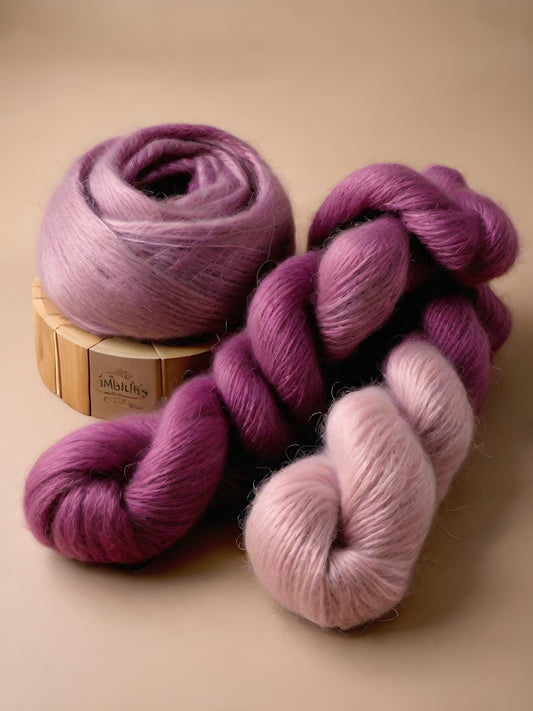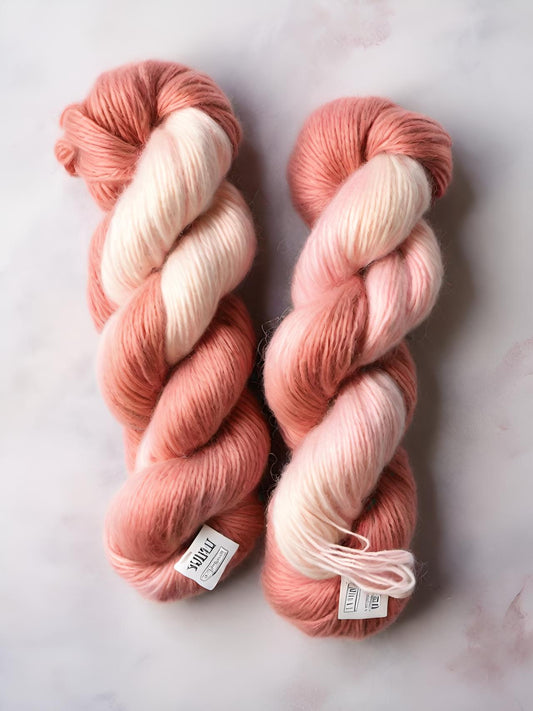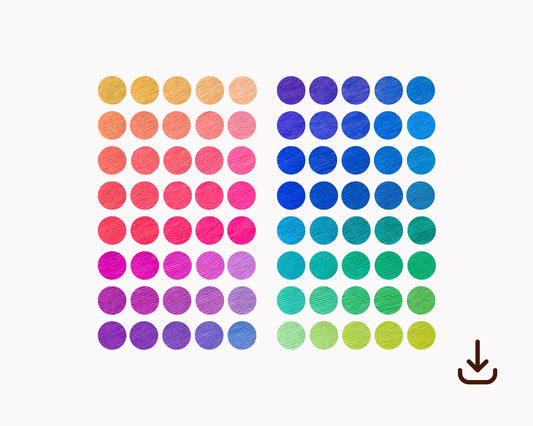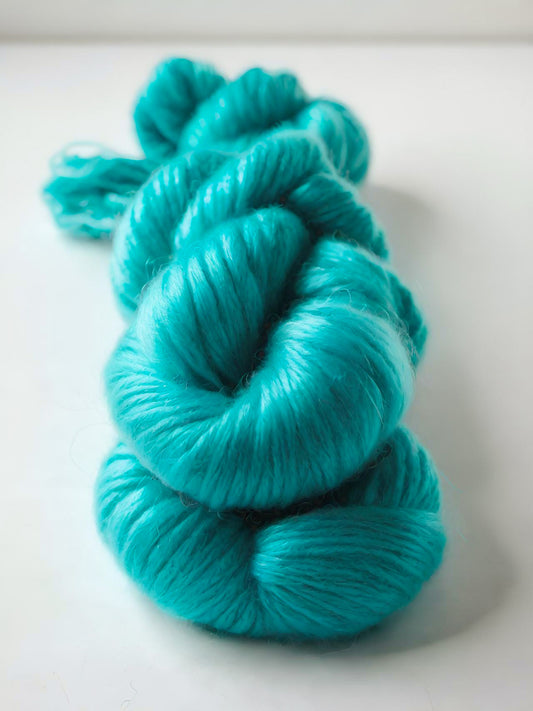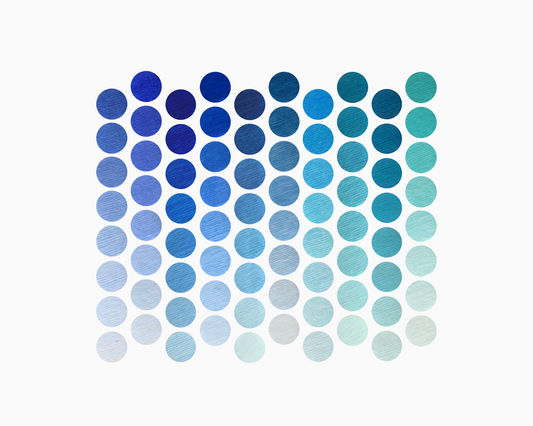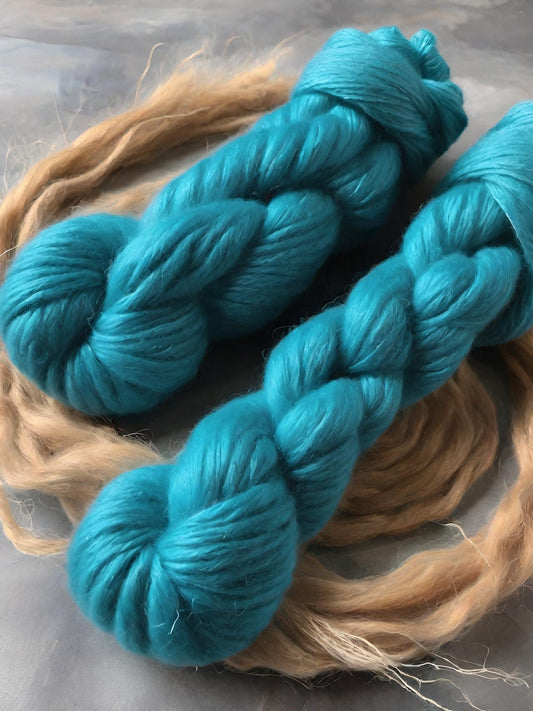
Fewer Formulas.
Dye More Yarn.
Join the community to get your first free Muffs Monthly Colourway Recipe.
You’ll learn a bit about Muffs process & fibre dyeing too.
-
Muffs Dharma Classic Collection
Vendor:MUFFS MERINORegular price $38.00 USDRegular priceUnit price / per -
Dharma Primary Shades Collection
Vendor:MUFFS MERINORegular price $30.00 USDRegular priceUnit price / per -
Dharma Primary Brights Collection
Vendor:MUFFS MERINORegular price $30.00 USDRegular priceUnit price / per -
Dharma Purple to Blue Shades
Vendor:MUFFS MERINORegular price $30.00 USDRegular priceUnit price / per

Hey, I'm Lori, a colour specialist for yarn dyeing enthusiasts, fibre artists, and fibre art brands.
I’m the gal they come to when they feel the lack of consistency and understanding in their dye process and fibre art brand vision.
I help them systematize their workflow, the technicalities and refine their fibre art niche so they can dye more, make more and sell their products & services without all the exhausting effort.
As a graphic designer turned fibre artist, turned teacher, turned creator, I’ve developed effective systems with time and personal investment with 15 years of experience and over 700 Etsy sales, including more then 100 students in my community.
Enjoy the Art Part
Muffs Merino helps fibre artists cut the confusion and dye more yarn. Begin your creative journey with colour, dye recipes, digital tools, mood boards, branding & creative workbooks. Enjoy the art part of it more.
Save time and cut the confusion by systemising your fibre dyeing process. Why is this important?
Colour Matching
Recording your recipes and making samples allows you to see how different colours look together, ensuring that they match or complement each other for your project. This is especially important for larger projects like blankets, sweaters, or home decor items.
Dyeing Style
It offers the opportunity to experiment with different colour combinations, patterns and fibre textures. This can inspire creativity and help you find the best combinations that enhance your focus, niche, dye style and aesthetic appeal of your work.
Client Approval
If you’re working with clients, having samples in various colours can help in getting their approval on the final colour palette, ensuring that the project meets their expectations.
Colour Consistency
Recording your recipes and making samples helps ensure colour consistency. This is crucial because variations can result in noticeable differences in colour, which might be undesirable in your final product.
Decision Making
It aids in practical decision making by allowing you to quickly and easily test different colours on various types of fibre. This includes checking for issues like how long it takes for colours to exhaust, when and when not to apply fixatives.
Market Research
Easily match colours based on your market research to see which colours are trending or popular, helping you save time, stay ahead in design trends and customer preferences.
140 + ★★★★★ reviews on Etsy...
-
Jana
Lori was extremely detail oriented and constantly taking in feedback and checking her work and she updated me every time she had an update to this document. She was great at communicating with me and this most recent version with added color samples and an explanation of her dyeing method and calculations was helpful.
★★★★★ -
Christina
I am very happy with my purchase of the Classic Color Collection. I have already done the first colors according to the instructions in it and it works perfectly. It's also great that the final version is now available and you can see what the color looks like on the yarn. Very, very great. Now I know straight away how I can mix a certain color and no longer have to touch myself and try for a long time.
★★★★★ -
Katie
Never thought about this but came across it and have tried a few and it works! It really open ma your mind to color theory and how amazing it is!
★★★★★ -
Sue
My daughter loves this exquisite mohair vest which is beautifully made and well priced. It exceeded our expectations. This mohair vest is stunning and well made. The colours combine beautifully - a standout piece in any wardrobe. Thank you so much.
★★★★★ -
Heike
I bought some things from Lori and I'm starting to color them now. So far it has worked great, today's result was Ruby and Enchaned from the Classic Collection. Lori is so perfect with color mixing and tips, she helps me so much. Always approachable, always ready for questions. You hardly find that nowadays!
★★★★★
-
Little Tatty's
Shop Muffs Knitwear
78 Ponsonby Road, Auckland
Open daily 10am - 6pm


